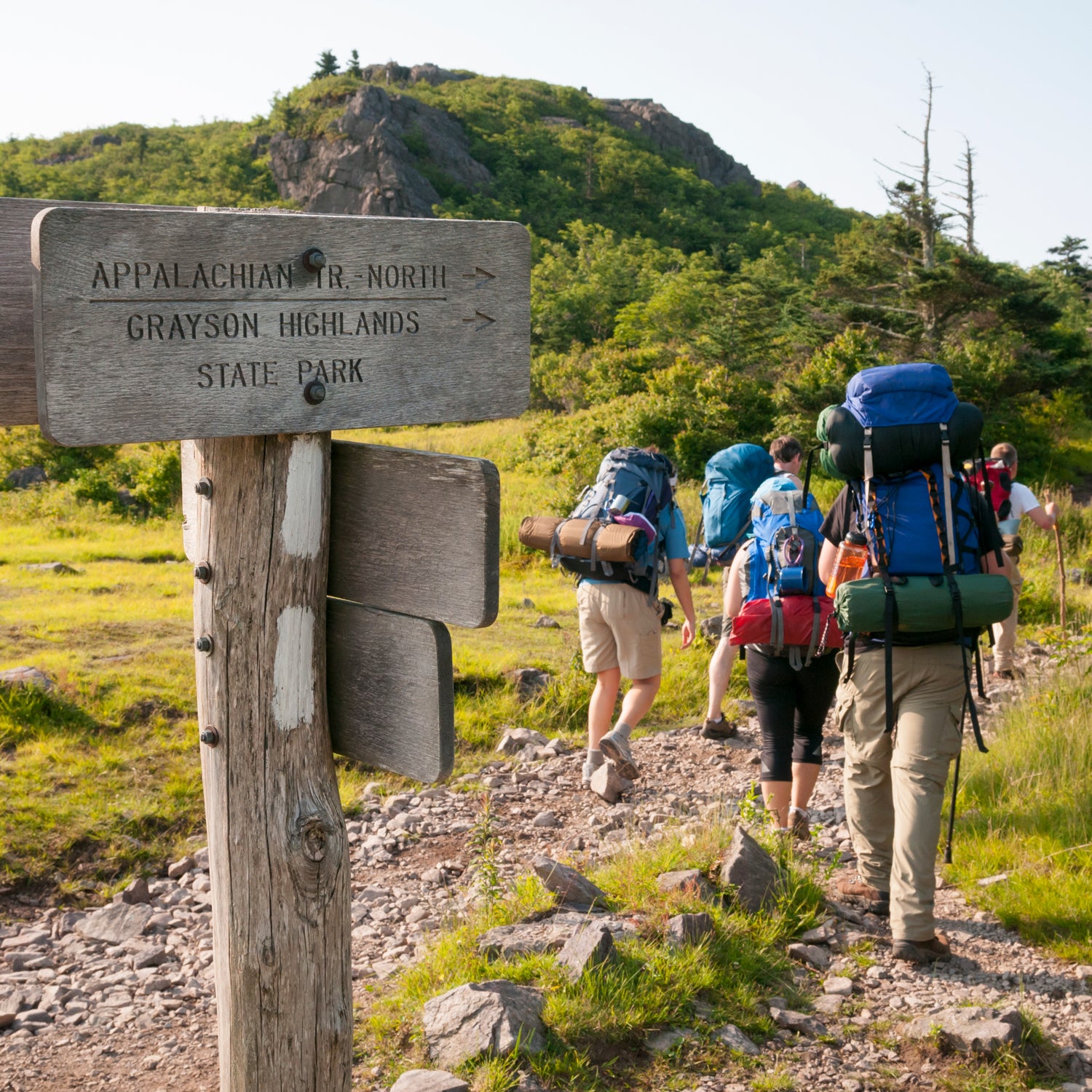Carl Goodman has patrolled a section of the Appalachian Trail where��it passes through��the Great Smoky Mountains��for 15 seasons. Five days a week, he chats with hikers about how to lessen their impact,��and each day he cleans up the messes they leave��behind.
Goodman, 76,��hails from Louisville, Kentucky, and his white beard is practically the only sign of his age; thousands of miles logged in the backcountry have helped keep him fit. This year��he’s one of more than 50 trail stewards and ridgerunners,��hired to help maintain the 2,190-mile trail as hordes of hikers make their way north or south.
Throughout the 1970s, about 800 people walked the length of the AT—a huge jump��from just 37 the decade before. Last year, a record 3,839 hikers set out from Georgia alone,��a 14 percent increase over 2016, and about 40 percent more than 2015. So far this year, roughly 2,800 people have registered their hikes with the (ATC), and that��figure is sure to rise once peak season arrives. As the number of hikers has exploded, so has trailside litter, overcrowding at shelter sites, noise, and the general sense that what is supposed to be an epic journey through the solitude of this great American trail is increasingly��being ruined by��people—lots and lots of people.
“I’ve seen a major change in the usage of the trail in recent years,” says Goodman, who first thru-hiked the AT��in 1999. “The more crowded it gets, the more it needs to be managed and taken care of.”
The ridgerunner��program started in the 1980s. It’s��a seasonal job that usually begins in early spring, depending on the location, and is��funded mainly by government agencies, the ATC, and local clubs. Goodman patrols approximately 16 miles of trail. He’s skilled in wilderness first-aid and the tenets of , and he can offer information on everything from weather conditions to how to hang a bear bag. More than knowledgeable docents,��the ridgerunners consider every hiker they meet��a chance to preserve the AT and reduce human impact. Last year,��ridgerunners��in Georgia��interacted with more than 10,000 people. They also dismantled 245 fire rings and packed out 486 pounds of trash.
In the past few years, there’s been a big push��by the ATC to educate��new hikers before they ever set foot on the trail. The reason: inexperienced hikers have the worst environmental impact, says Chloe de Camara, a former ridgerunner who thru-hiked the trail��in 2015��and is now the ATC’s trail-education specialist. Trail managers often find that human waste hasn’t been buried the recommended six to eight inches, and some people even defecate near water sources. There are more messes left behind at shelters these days, and when those spots are overcrowded, hikers sometimes camp in the wilderness and trample vegetation. “We’re trying to reach people well in advance, and we’re trying to engage with them and ensure they know the right steps to take before they go out hiking.”
And��the hikers the ATC isn’t able to��teach beforehand? The ridgerunners must��educate them on the trail.��The hope is that hikers encounter at least one ridgerunner along the way. Indeed, the program has been so effective��that, three years ago, the (GATC) created a trail-ambassador��program to patrol a��76-mile section of the AT. The 38 ambassadors are like��ridgerunners in every way except they’re volunteers. Other groups have adopted��the��system,��including the in North Carolina, the in Virginia, the near Washington, D.C., and��the in New Hampshire’s White Mountains.
The ridgerunners are just one small component of��a much larger plan to manage��and train the surge of new hikers. Last year, the AT rolled out an online program called��,��hoping that hikers would sign up for periods when campsites are available in greater numbers. It’s too soon to tell if the initiative will work; if it doesn’t, the ATC may need to take more drastic measures, like��permitting, something the Pacific Crest Trail instituted in 2015. The ATC wants to avoid that, so for now it’s up to the ridgerunners to control the crowds.“We’re encouraging year-round patrols, because there are so many people on the trail who are unprepared,” says Jay Dement, president of the GATC.
Overcrowding has already prompted a big push from��the ATC to get hikers to plan alternatives to the usual northbound route��with either the southbound option, or a flip-flop route in which hikers start in the middle.��The ATC is also��collecting more data, using infrared counters along the path for instant traffic numbers.
There are a few spots where the AT hikers need��permits, including along��Mount Katahdin in Maine, and to camp��in��Great Smoky Mountains National Park. But the goal is to avoid a��permitting system like the one in use on the PCT, which��allows only 50 registrants per day.��“We would love the Appalachian Trail to be as pristine and unmarked by humans as possible,” says Morgan Sommerville, the ATC’s southern regional director. “It’s supposed to provide a primitive, natural experience.”
Some believe the bump in hikers on the Appalachian Trail will wane, as it has in the past. The ATC is doing everything in its power to ensure it’s experienced exactly as intended—as a wilderness retreat. For now, the��ridgerunners��may be��the best hope.


